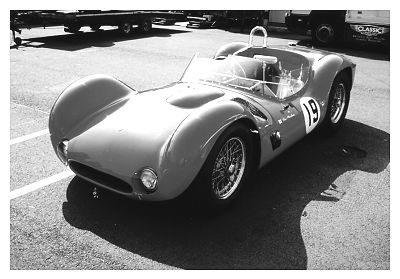The original production run of six Tipo 60s, purchased by American customers, was followed by requests for a 3-litre model to participate in Formula 3000 events.
Due to the many enquiries from the US in regards to a larger engined version, Orsi agreed to let Alfieri develop a 3-litre engine. This increase in displacement (to 2890 cc) gave rise to the Tipo 61 and its production was totally absorbed by the US market, thanks to the Camoradi Team and its drivers.
Fitting it to the confined engine bay of the 60 was the main challenge. Eventually the Tipo 61 emerged, and the engine had a displacment of 2890cc. The weight penalty for the extra performance was minimal, but compared to opposition 3-litre class, there was a significant saving on the scale of approx. 190 Kg in weight giving a highly favourable weight-to-power ratio of 2.92 kg/bhp.
In 1961, the Camoradi Team entered the World Sportscar Championship, piloting the Tipo 61 to victory in Cuba (Moss) and at the Nürburgring (Moss-Gurney) and finishing well in the other races.
Based on these encouraging results, Maserati decided to make some aerodynamic modifications with a view to the 24 Hours of Le Mans, but the results, unfortunately, were disappointing. Then in 1961, the Birdcage was victorious in the 1000 kms of Nürburgring (Casner-Gregory) and at Rouen (Casner).
The last great traditional model (front-engined and rear-wheel drive), the Maserati Birdcage left an important mark because of its refined technical solutions. Total production of the Birdcage in-
cluded 17 Tipo 61s (2890 cc engine). |
